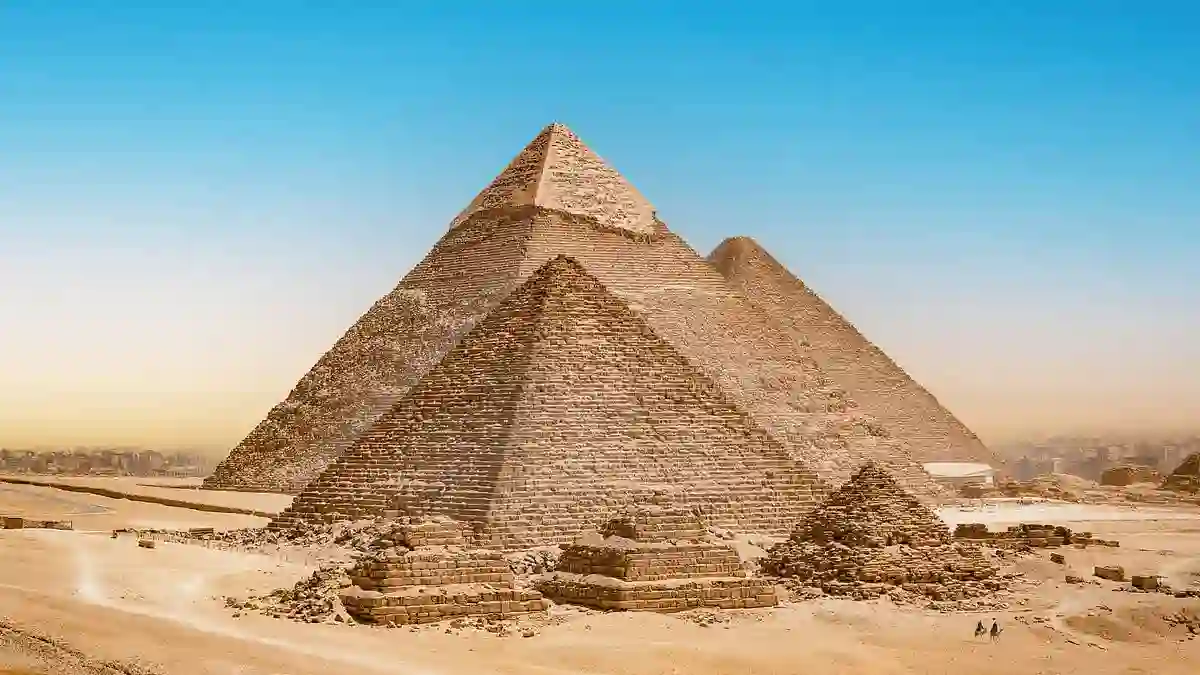The Great Pyramid of Giza has long been shrouded in mystery and awe, with much debate about who built it and when.
Recently, a controversial theory has stirred the pot by suggesting the timeline might be far older than the widely accepted 4,500 years ago during Pharaoh Khufu’s reign.
Graham Hancock Challenges the Traditional Timeline
British author Graham Hancock recently appeared on the American Alchemy podcast to share some intriguing ideas.
He argues that the Great Pyramid wasn’t actually built by the ancient Egyptians as we know them, but by a lost civilization dating back roughly 12,500 years.
“Parts of the Great Pyramid were definitely finished by the Egyptians,” Hancock said.
“But I believe they inherited an ancient monument that had already existed in some form on the Giza Plateau.”
The Erosion Evidence That Raised Eyebrows
One of Hancock’s key points revolves around the weathering of the nearby Great Sphinx.
He claims that the erosion patterns on the Sphinx could only have been caused by heavy rainfall over thousands of years, something that wasn’t present in the Giza region 4,500 years ago but was common at the end of the last Ice Age.
However, this idea has met sharp criticism from established Egyptologists.
Egyptologist Dr. Zahi Hawass Pushes Back
Dr. Zahi Hawass, a leading Egyptologist who has excavated the Giza Plateau for decades, disputes Hancock’s claims.
He says the damage to the Sphinx comes from centuries of wind erosion, not rain.
“If the pyramid was built 12,000 years ago, where is the proof?” Hawass questioned.
“My colleague Mark Lehner and I have worked there for 50 years and all evidence points to the Fourth Dynasty, about 4,500 years ago.”
The Pyramid’s Construction and Its Astronomical Alignments
The Great Pyramid, built by Pharaoh Khufu during Egypt’s Old Kingdom, is the largest of three pyramids on the Giza Plateau, alongside those of Khafre and Menkaure.
Their exact purpose and how they were built remain topics of fascination.
Hancock also challenges the accepted view that the pyramid was constructed within 23 years.
Instead, he suggests it may have taken centuries or even millennia.
He points to the huge bedrock platforms beneath the pyramids, claiming they were shaped by an older, advanced civilization during a lost era called Zep Tepi—“The First Time.”
Hancock notes that the pyramid platforms align with Orion’s Belt as it appeared 12,500 years ago, unlike the star positions from 4,500 years ago.
Mainstream Archaeology Offers a Different Story
Dr. Hawass counters with evidence like the Wadi El-Jarf Papyri, ancient diaries from an overseer named Merer.
These documents describe in detail how workers quarried and transported limestone to build the pyramid under Khufu’s orders.
“Egyptian history is well-documented,” Hawass explains.
“There is no gap supporting such an ancient construction date.
The time period Hancock refers to was a very early stage of civilization, not advanced enough for monuments like the pyramids.”
Ongoing Debate Keeps the Mystery Alive
This clash of theories highlights how much about the Great Pyramid still sparks debate.
Whether it was built by the Egyptians 4,500 years ago or a much older civilization thousands of years prior, the monument continues to captivate and puzzle both experts and enthusiasts alike.
